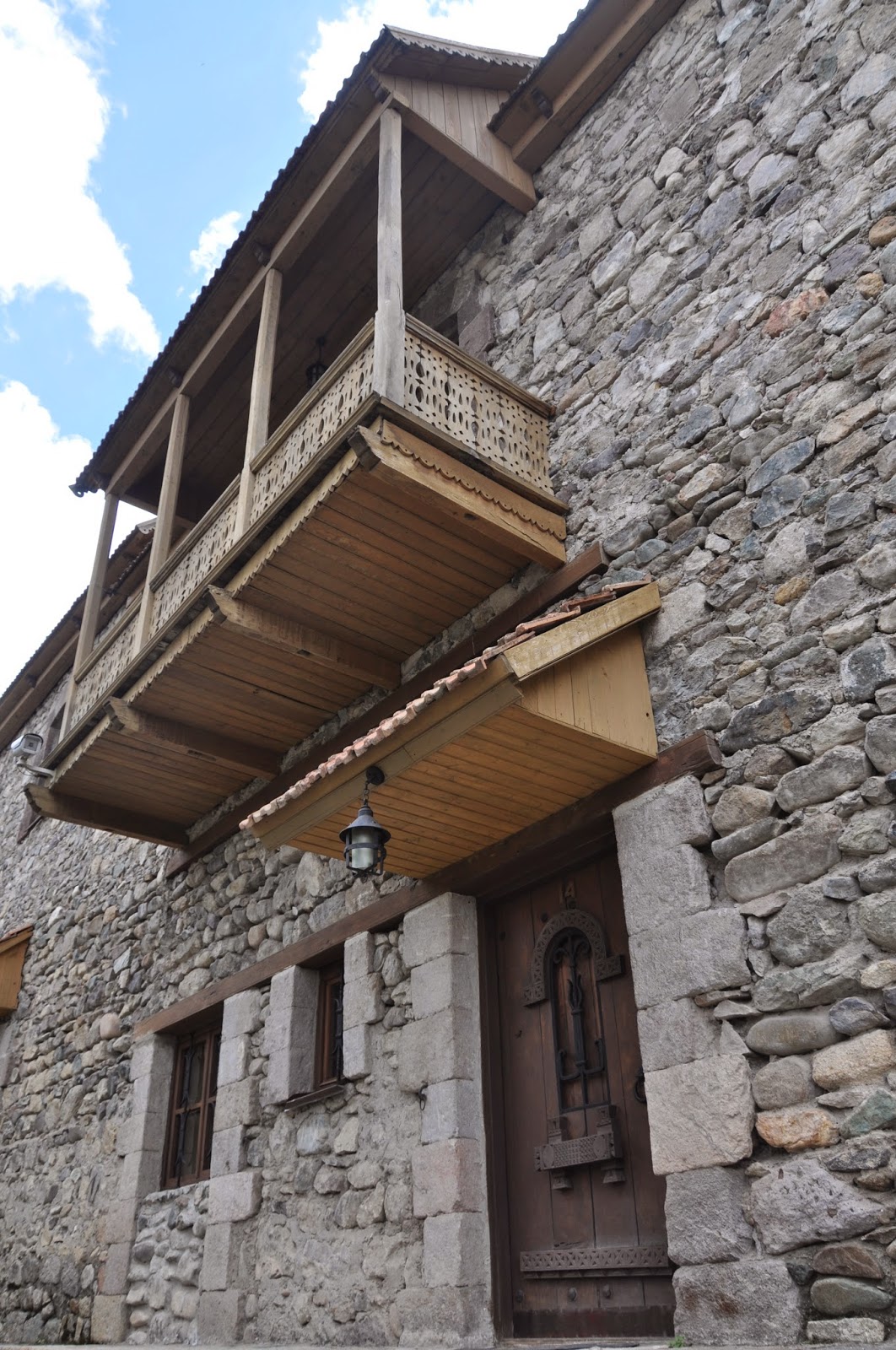Before heading to the Ggharkunik Province and because we were slightly ahead of schedule Armine proposed a short visit to the old city of Dilijan, which we all accepted enthusiastically because we were looking forward to buying some handicraft which we were told we might find in the little shops in the short Sharabayan street.
What immediately caught our attention was the distinctive style of the buildings with their wooden carved doors and balconies with carved handrails supported by wooden struts.
We did find some quite interesting shops with real artistic work pieces made locally, though I ended up only buying a decorative piece made out of colourful strings of wool.


We then headed towards the Lake Sevan, which we reached just in time for lunch as a preparation for the the 230 steps we would have to climb so as to visit the Sevanavank Monastery ensemble.
Lake Sevan which enjoys national park status is fed by 28 rivers though there is only one flowing out, the Hrazdan which flows out of the lake to become a tributary of the Arax. Some of the attractions of the lake seem to be the beaches, the only ones in Armenia.
The Sevan Monastery is said to have been one of the first seminaries to reopen in Armenia, though used in 1830 as a reformatory for monks from Echmiadzin who had been banished for their misdemeanour's. It was initially built on the shore of a small island, following the draining of the lake Sevan during Stalin's ruling period the water is said to have fallen about 20 metres having thus transformed the island into a peninsula.



Sevanavank comprises two surviving buildings, the oldest being situated at the North east of the complex where an inscription states it was founded in 874 by Princess Miriam, wife of Prince Vasac of Syunic and daughter of the Bagratid King Ashot I, following a time of 200 years of Arab Islamic domination.
I couldn't resist taking a photo of a group of French children attending an Armenian school in France, which bears the same name as the inventor of the Armenian alphabet, whom we had met during lunch and who were on a school trip to the country of their ancestors.

The courtyard of the larger church (Mother of God church) had some rather interesting khachkars carved from a local green stone, which naturally stood out as most of the ones we had seen so far were made of tuff.


The carved entrance door was worth being looked at thoroughly, but so was the wooden altar screen, partly carved and partly painted, despite having been an 1824 gift from the Monastery of St. Thaddeus, south of Maku, present day Iran.




The extremely elaborate 13th century basalt khachkar was worth noticing as well. At the top right God can be seen with the right hand arm raised in the Armenian style of blessing, surrounded by the symbols of the four evangelists- eagle, bull, ox and angel, whilst on the top left He is to be seen surrounded by angels. To the left God can be seen expelling Adam and Eve from Eden below. The central panel shows Jesus on the cross flanked by Mary and Saint John. To the right of Jesus there are panels showing his birth, the ox and ass.



Equally interesting to look at was a beautifully carved walnut door to be seen a little bit farther inside.

We walked around for a while admiring the artists who were painting within the premises of the ensemble. I ended up buying some beautiful printed photographs of some of the details I had previously tried to capture hoping the reproductions would be of better quality than the photos I had taken.


Around the lake there was fairly big open market, though we were warned many of the precious stones were fake and in regards to the handicraft being sold I must say I was rather disappointed once they looked quite uninteresting.





















No comments:
Post a Comment